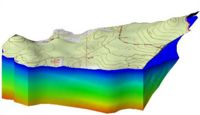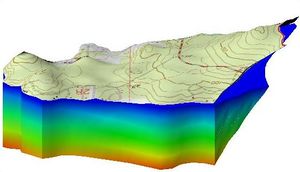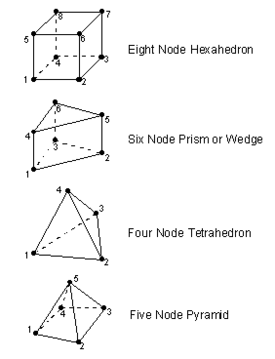GMS:3D Mesh Module: Difference between revisions
From XMS Wiki
Jump to navigationJump to search
No edit summary |
No edit summary |
||
| Line 3: | Line 3: | ||
[[Image:Sample_FEMWATER.JPG|thumb|none|left|300 px|Isosurface of Pressure Head from a FEMWATER Simulation]] | [[Image:Sample_FEMWATER.JPG|thumb|none|left|300 px|Isosurface of Pressure Head from a FEMWATER Simulation]] | ||
==3D Element Types== | |||
Four types of 3D elements are supported by GMS: eight node hexahedra, six node prisms or wedges, four node tetrahedra, and five node pyramids. Hexahedra and wedges are created by projecting a 2D mesh. Tetrahedral elements are constructed with the '''Tessellate''' command or they can be created elsewhere and imported into GMS. | |||
[[Image:ElemTypes1.png|thumb|center|275 px|Types of 3D elements supported by GMS]] | |||
{{Navbox GMS}} | {{Navbox GMS}} | ||


